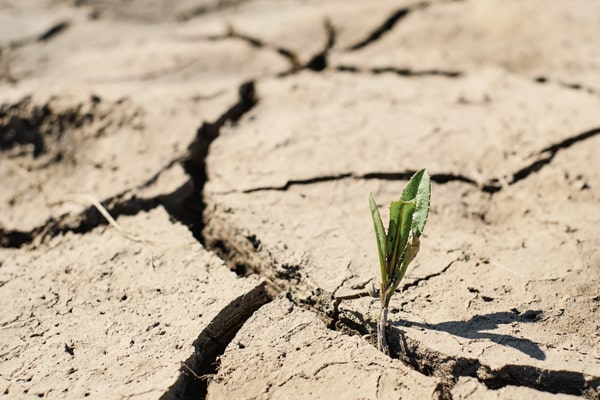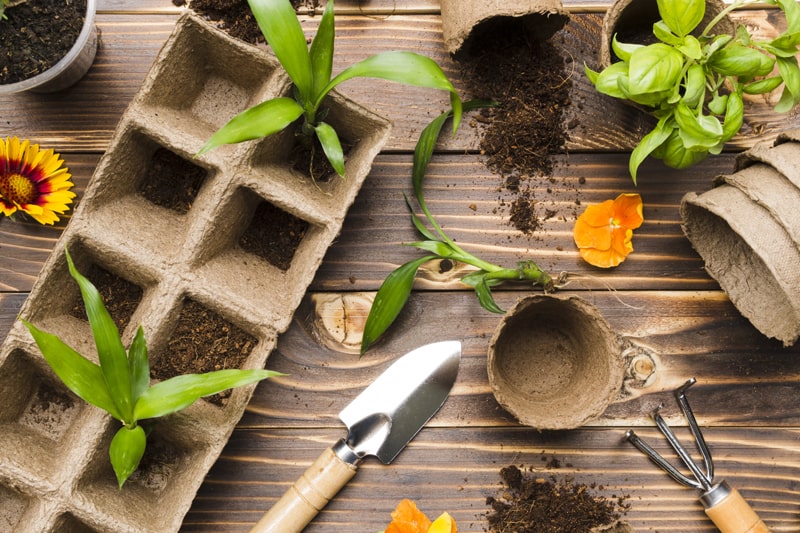Gardening can be a rewarding and fulfilling hobby, but it's not without its challenges. From pest invasions to nutrient deficiencies, various obstacles can hinder the success of your garden.
Fortunately, with a bit of knowledge and proactive measures, many common gardening challenges can be overcome. In this article, we will explore eight common gardening challenges and provide practical yet effective solutions to help you achieve a thriving and bountiful garden.
Contents []
Common Gardening Challenges and Solutions
Pest Attacks: One of the most frustrating challenges for gardeners is dealing with pests such as aphids, slugs, or snails. These critters can wreak havoc on your plants, damaging leaves, flowers, and fruits.
To address pests, implement organic pest control methods like using insecticidal soaps, introducing beneficial insects, or creating physical barriers like netting or fences. You can also use homemade and natural pest deterrents using white vinegar, beer, citronella oil, garlic oil, neem oil or diatomaceous earth to keep pests at bay.
Poor Soil Quality: Poor soil quality is typically nutrient deficient. These soils cannot support plant growth, so plants cannot grow more fruits, leading to lower yields.

Conduct a soil test to determine its composition and nutrient levels. Based on the results, amend the soil with organic matter like compost or well-rotted manure to improve its structure and enrich it with essential nutrients. Additionally, consider using organic soil conditioners such as humic acid soil amendment and seaweed extract to supplement specific nutrient deficiencies and promote healthy plant growth.
Weeds: Weeds compete with your plants for resources like water, sunlight, and nutrients. Regular weeding is crucial to maintain a healthy garden. While it's frustrating to see weed growth just right after clearing the entire space, continuous and consistent weed growth controls will eradicate most types of invasive plants.
Use manual methods like hand-pulling or hoeing to remove weeds, ensuring you extract the entire root system. You can use landscape fabric on garden beds to control weeds or apply a layer of mulch around your plants to suppress weed growth. These strategies work by blocking sunlight and preventing weed seeds from germinating.
Are you looking for high-quality Landscape Fabric for your garden? Choose ECOgardener 5oz Pro Garden Weed Barrier Landscape Fabric to make your gardening easier and 100% hassle-free!
Watering Issues: Proper watering is essential for plant health, but it can be challenging to strike the right balance. Underwatering can lead to wilting and stunted growth, while overwatering can cause root rot and other water-related issues.
Ensure you water your plants deeply and evenly, allowing the soil to dry slightly between waterings. Consider installing a drip irrigation system or using a moisture meter to gauge the soil's moisture levels accurately.
Water only when needed because some plants do not require frequent watering. It's vital to learn all about the watering needs of every plant you're growing in the garden and grouping them accordingly.
Extreme Weather Conditions: Unpredictable weather patterns, including heatwaves, droughts, or heavy rains, can pose significant challenges for gardeners. These challenges can be solved by installing different protective barriers and applying growing methods to improve root growth and resilience.
To protect your plants, provide shade during hot periods, use organic mulch to retain soil moisture, and consider investing in a rainwater harvesting system to supplement irrigation during dry spells. Selecting plant varieties well-suited to your local climate can also increase their resilience. Applying soil conditioners like humic acids and seaweed extract will also help plants grow stronger roots, which boosts plants' resistance against extreme weather.
Insufficient Sunlight: Insufficient sunlight can lead to leggy, weak plants with reduced flower or fruit production. If your garden receives limited sunlight, choose plants that thrive in shade or partial shade.

Consider using reflective surfaces like white gravel or light-colored containers to maximize available light. You can also employ techniques like vertical gardening to make the most of limited space and sunlight. Be strategic where you grow different plants. Herbs and fruit-bearing plants should be grown in places that get a lot of sunlight, while light-sensitive plants must be grown in shady areas.
Spread of Diseases: Plant diseases, such as powdery mildew or fungal infections, can quickly spread and damage your plants. This kind of gardening issue is best prevented in the first place rather than treating the affected area because diseases can spread rapidly in the garden. This goes especially for plants that are grown quite close together.
To minimize the risk, practice good garden hygiene by removing and disposing of infected plant material. Additionally, promote airflow around plants by spacing them adequately and avoiding overhead watering. Using disease-resistant plant varieties and applying organic fungicides or biological control agents can further help manage and prevent diseases.
It's equally important to reduce watering to prevent standing water. Water only when needed and keep areas where water pools dry to prevent mold or mildew growth.
Lack of Space: Limited garden space doesn't mean you can't enjoy the pleasures of gardening. Thankfully, this is one gardening challenge that you can overcome easily.
Optimize your space by utilizing containers or raised beds. Select compact or dwarf varieties of plants because these are well-suited for small gardens. Additionally, consider intercropping or succession planting techniques to maximize yield and make the most of your available space.
We also suggest giving vertical gardening a try. This is a technique that utilizes vertical structures to grow different plants. These structures include trellises, tuteurs, obelisks, and hanging planters. Vertical gardening is space-saving and flexible. With this technique, you can grow different plants in a small space.
Growing too many plants: This is another gardening challenge that can be resolved quickly because you have total control over the garden's design. It's easy to get carried away by planting too many plants and growing them too closely together. This can lead to the spread of pests and diseases. It can also crowd the plants, which will inhibit plant growth.

Start by planning your design more and adding only the right number of plants that your space can accommodate. Always consider the space you're using and the kinds of plants you want to grow. Start your collection with a small number of plants and add more only when the space looks too bare.
While gardening may present various challenges, being equipped with knowledge and employing proactive measures can help you overcome them successfully.
You can create a flourishing and productive garden by addressing common issues like pest infestations, nutrient deficiencies, weeds, watering challenges, extreme weather conditions, insufficient sunlight, disease management, and lack of space.
Indeed, gardening involves trial and error, so don't be discouraged if you face challenges. Learn from your experiences and adapt your gardening practices accordingly.
Remember our tips, make adjustments to your specific circumstances, and enjoy the satisfaction of nurturing thriving plants. Happy gardening and reap the rewards of your gardening efforts!



